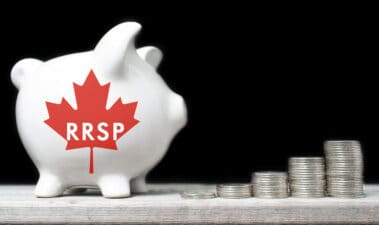There are various categories of stock I’ve tried to bucket together. In this economic environment, I generally try to group companies into three brackets before assessing them.
The first bracket are companies that have durable competitive advantages. They may also be supported by secular growth trends. These trends should either not be impacted by the pandemic or be accelerated by the pandemic.
The second group of companies are those that will take a serious, near-term, COVID-related hit to their balance sheets. However, they are likely to survive. These may be great long-term investments.
The third grouping encompasses companies that have no durable competitive advantage. They may have a business model that is archaic or too exposed to disruption. These should be avoided, no matter how cheap the valuation gets or how juicy the dividend yield.
In my view, Manulife Financial (TSX:MFC)(NYSE:MFC) is in the second grouping. That’s the toughest group to assess, but let’s give it a shot.
Near-term headwinds
Manulife’s core businesses are likely to remain under pressure for at least the next 12-18 months, according to most analysts. The company’s investment income from its flow is likely to be materially lower. This is due to the lower-for-longer interest rates.
A zero interest rate policy in Canada and the U.S. handed down by the countries’ respective central banks is likely to last at least one to two years. This will impact various fixed-income investments that companies like Manulife rely on for stability of earnings and cash flows. This increase in uncertainty has put upward pressure on the company’s dividend yield. This is a good thing for those investors who believe the yield is safe.
Additionally, Manulife’s wealth management business, previously a tailwind before the coronavirus pandemic, has become a headwind in a short amount of time. I expect to see a negative impact on this business’s assets under management in the short term. I see a likely recovery in 18-24 months as we emerge from this economic mess.
Value proposition high
Despite these clear and obvious near-term headwinds, I see a strong value proposition and buy-and-hold thesis for investors with a time horizon longer than two years. Based on specific fundamental factors, Manulife is ridiculously cheap right now. I certainly think that more downside could be on the horizon. However, this is why I’d encourage investors to explore what a potential recovery would look like 18-24 months out.
The company’s dividend yield, of just below 7% at the time of writing, is approximately double the company’s long-term dividend yield. This dividend, like those of large Canadian banks, is generally considered to be very safe. This sort of depressed valuation, on a dividend basis alone, implies some serious upside.
Furthermore, Manulife is now trading at a range of six to seven times earnings, which is a discount to large Canadian banks. This shows just how (potentially overly) pessimistic investors have become on insurance companies, even relative to other financial companies.
Bottom line
Manulife remains one of these beaten-up, blue-chip stocks that could potentially have a very strong showing in a post-COVID recovery. I would encourage investors to keep this company on your watch list for now, as I expect more near-term downside. I also expect a nice recovery in 12-18 months, making this an investing value play for 2021.
Stay Foolish, my friends.




